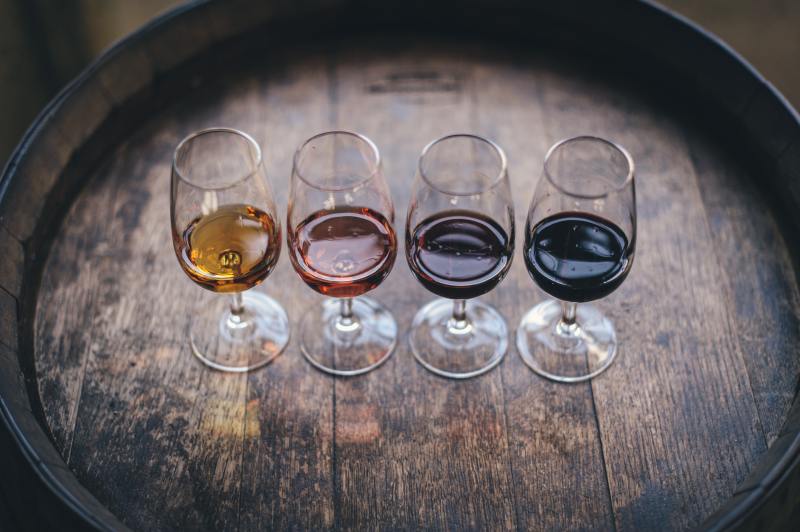
Whether you’re into dry reds, fruity whites, or bubbly prosecco, the alcohol content of red and white wines, as well as other types of wines, is different from bottle to bottle. The alcohol by volume (ABV) of your wine can affect its taste in more ways than one. To reach that perfect flavor profile, your wine needs to have just the right balance of sugar, alcohol, acid, and tannin.
A wine with a higher ABV might taste richer and fuller compared to a more subtle wine with a lower ABV. Surprisingly, dry wines typically have a higher alcohol content. In fact, the term “dry” has nothing to do with a wine’s alcohol content. The next time you’re perusing the wine aisle, keep in mind that the lower the ABV, the sweeter the wine will be.
Within the five main categories of wine — sparkling, rosé, white, red, and fortified — let’s see which one gives you the strongest buzz, from lowest to highest.
Sparkling Wines
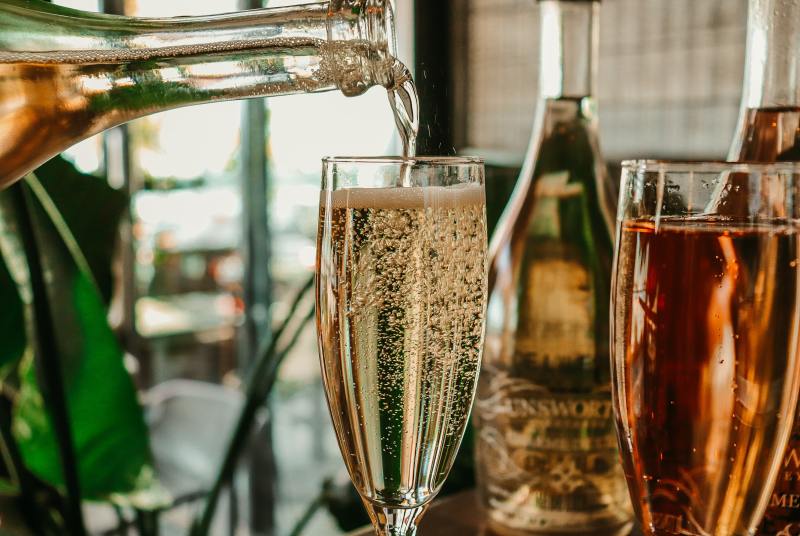
There’s a reason why sparkling wine is often the go-to choice for a special occasion toast or a morning mimosa. Compared to the majority of still wines, sparkling wines like Champagne have a relatively low alcohol percentage of about 12 to 12.2%.
How come a glass of bubbly is tame compared to a glass of full-bodied red? The grapes used to make sparkling wine are harvested earlier than other grapes, which means they have a lower sugar content. Since sugar turns to alcohol during the fermentation process, sparkling wines often have a lower ABV. Speaking of sugar, are you wondering how many carbs are found in wine? Bottom line, if you plan on taking it easy for the night, sparkling wine is always the way to go.
Rosé Wines
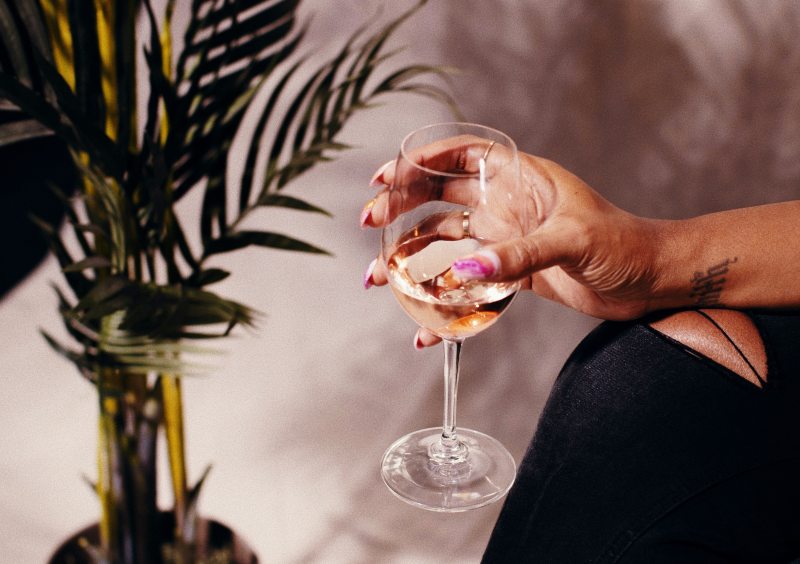
Have you ever wondered what exactly makes rosé, rosé? The process for making this refreshing springtime wine is a lot like the red wine process, but with fewer grape skins added throughout. Rosé comes in contact with red grape skins anywhere from a few hours to a week. This short amount of time pales in comparison to the time needed for red wine to develop. This is how rosé ends up being that beautiful light pink color. The flavor of rosé is also a lot lighter than traditional red wine.
You’ll usually find rosé wines with an ABV of 12%. There are some varieties of rosé that fall on the sweeter side, while others are considered m0re dry and therefore, less sweet. Yes, rosé is the perfect springtime drink, but don’t forget about those darker and more acidic rosés that you can enjoy all year long.
White Wines
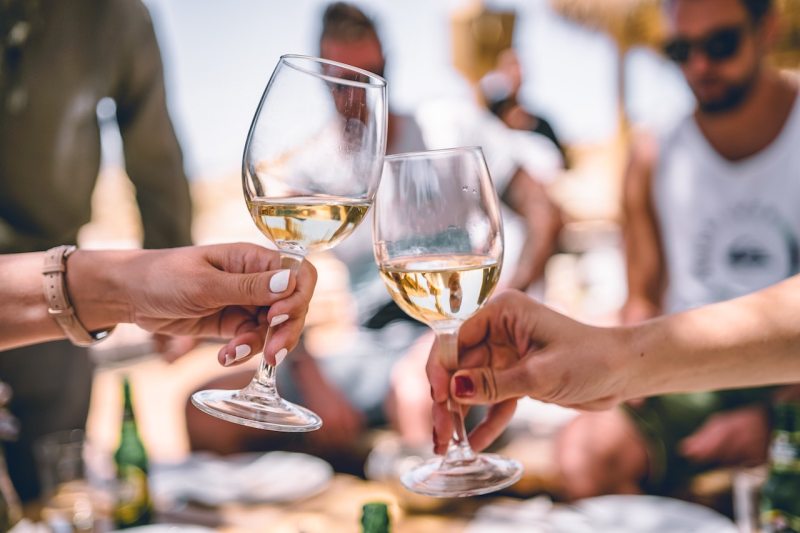
Of the still wines, the alcohol content of white wine could be anywhere from 5 to 14%. White grapes naturally have less sugar than darker grape varieties, placing white wine smack in the middle of sparkling wines and red wines. Have you ever noticed how much easier it is to drink a glass of your favorite white wine with dinner than a glass of red? The carbon dioxide in a glass of white wine causes the body to absorb the alcohol at a faster rate, which makes you become drunk a little bit faster. For certain people, drinking dry white wine could even promote digestion and relaxation, while others might get a stomachache because of white wine’s high acidity content.
Red Wines
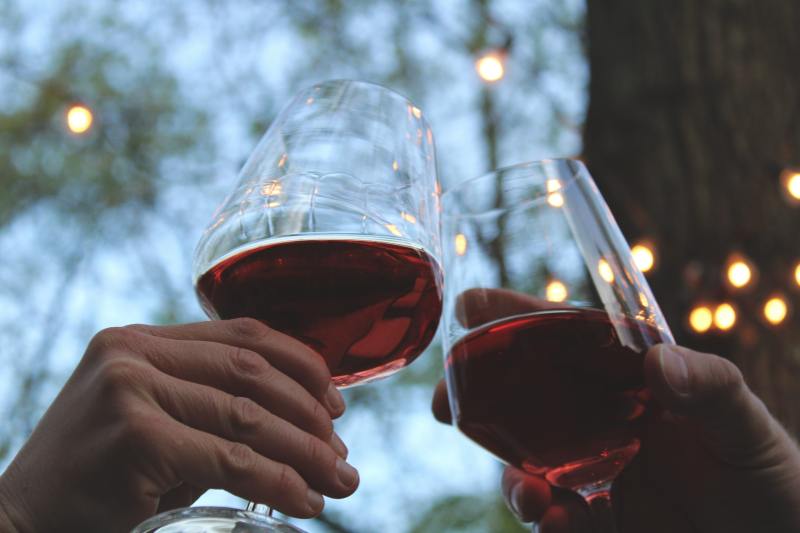
As we dive deeper into color, we start to get a higher alcohol content as well, especially when it comes to red wine alcohol content. The ABV for most red wine falls in between 12% and 15%, averaging around 13.5%. If you’re a sucker for a full-bodied red wine like a cabernet sauvignon or malbec, you’ve probably noticed how quickly the alcohol goes to your head. A higher alcohol content in red wine often means a more aromatic and complex flavor profile. The grapes used to make red wine are picked much later in the season, allowing time for the fruit to become sweeter on the vine. As a general rule, red wines tend to be stronger than white wines, so drink accordingly.
If you’re wondering why red wine gets a healthier rap that its lighter, brighter cousin, it’s because red wine is fermented with the skin, seeds, and stems. This process allows red wine to be packed with plant compounds from those skins.
Fortified Wines
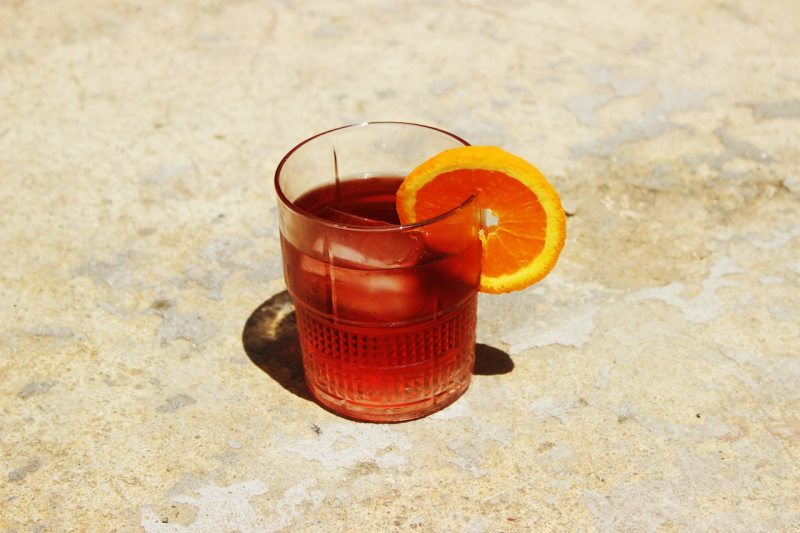
Fortified wines, with an ABV of 20%, are often used in the kitchen or added to a cocktail because of their bold flavor profile. Due to their high alcohol content, fortified wines are mainly for light sipping. We’re talking about wine-based drinks like Marsala, sherry, and vermouth, where the wine has been boosted with a spirit like brandy.
As the strongest category of wine on our list, fortified wines are best served with a meal. Originally, spirits were added to wine to stop them from turning into vinegar, but over time, we’ve learned that spirits help enhance the flavor of the wine as well. You can tell whether the wine will be sweet or dry by the length of time it ferments before being fortified.
Not All Wines Are Created Equal
If you didn’t realize how vast the world of wine can be, hopefully, this guide gave you a crash course in the most popular varieties. It’s easy to assume all wines will have the same effect on you, but once you look under the surface, you’ll realize just how much there is to learn. Next time you pick up a bottle of wine for that dinner party or date night, think about how much of a buzz you’re looking to have and plan accordingly. Will it be a low-key dinner with a glass of chilled prosecco sparkling wine or a vermouth-based cocktail kind of evening? The world is your oyster.
Editors' Recommendations
- How to brunch like the French with lobster croissant and champagne
- The 10 best rosé wines that everyone should drink
- What is a barrique? Exploring wine’s most popular barrel size
- There’s a big wine glut right now: Here’s what that means for you
- This is what wine tasted like in ancient Rome, and we have thoughts




